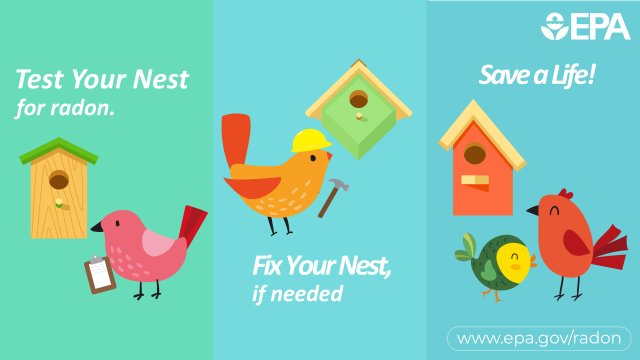Indoor Air Quality
Did you know that we spend about 90% of our time indoors? While outdoor air pollution can enter your home and impact your indoor air quality, there are also sources of indoor air pollution. These pollution sources can result in your indoor air being worse than your outdoor air. The good news is that there are some basic strategies you can use to improve your indoor air. Keep reading to learn more about indoor air quality and what actions you can take to make a difference at your home, school, workplace and more.
On this page:
- Indoor Pollutants and Sources
- Health Risks of Indoor Air Pollution
- How to Improve Your Indoor Air Quality
- Indoor Air Quality for Schools
Indoor Pollutants and Sources

Like outdoor air pollution, there are unique types and sources of indoor air pollution to be on the lookout for so you can take action to prevent or reduce your exposure. Common indoor air pollutants include carbon monoxide, smoke, radon, mold, particulate matter, and volatile organic compounds (VOCs). All homes should have carbon monoxide and smoke alarms and be tested for radon. EPA's Interactive Indoor Air Quality (IAQ) House, pictured above, lets you click on different rooms to find sources of these and other pollutants.
Test Your Knowledge 1
D is the correct answer.
Hey... No Peeking!
You need to select an answer to the question before we'll show you the right answer...
Where can I learn more?
Health Risks of Indoor Air Pollution
Indoor pollution sources that release gases or particles into the air are the primary causes of indoor air quality problems. Some health effects may show up shortly after a single exposure or repeated exposures to a pollutant. These include irritation of the eyes, nose, and throat, headaches, dizziness, and fatigue. Other health effects may show up either years after exposure has occurred or only after long or repeated periods of exposure. These effects, which include some respiratory diseases, heart disease and cancer, can be severely debilitating or fatal.
Where can I learn more?
How to Improve Your Indoor Air Quality
There are three basic strategies to improve indoor air quality:
- Source Control - Identify and eliminate individual sources of pollution. In most cases, source control is the most effective solution to indoor air quality problems.
- Improve Ventilation - Lower the concentration of indoor air pollutants by increasing the amount of outdoor air coming indoors.
- Air Cleaners/Filtration - The use of portable air cleaners and higher efficiency heating, ventilation and air conditioning (HVAC) filters can supplement improvements from source control and improved ventilation.
Test Your Knowledge 2
D is the correct answer.
Hey... No Peeking!
You need to select an answer to the question before we'll show you the right answer...

Where can I learn more?
- Find a Radon Test Kit to "Test Your Nest."
- Review the Improving Your Indoor Environment resource for a simple overview of helpful tips.
- Review the Guide to Air Cleaners in the Home for information on HVAC filters and portable air cleaners, also known as air purifiers.
- Learn how to clean up and prevent mold growth by exploring EPA's Brief Guide to Mold Moisture and Your Home.
Test Your Knowledge 3
B is the correct answer.
Hey... No Peeking!
You need to select an answer to the question before we'll show you the right answer...
Indoor Air Quality for Schools
Poor indoor air quality can impact the comfort and health of students and school staff, which can affect concentration, attendance and performance. If schools fail to prevent or respond to air quality issues, students and staff could be at an increased risk of health impacts, such as fatigue, nausea, coughing, eye irritation, headaches, asthma episodes and allergic reactions.
What can schools do to improve their indoor air quality?
- EPA's Tools for Schools Framework for Effective School Indoor Air Quality Management offers guidance tailored for schools for addressing common indoor air issues.
- EPA's Tools for Schools Action Kit includes a coordinator's guide and checklists to engage school staff and key stakeholders in developing, implementing and maintaining an indoor air quality management plan.
- View webinar recordings about indoor air quality management in schools featuring technical experts, industry leaders and model school districts showcasing their achievements.
